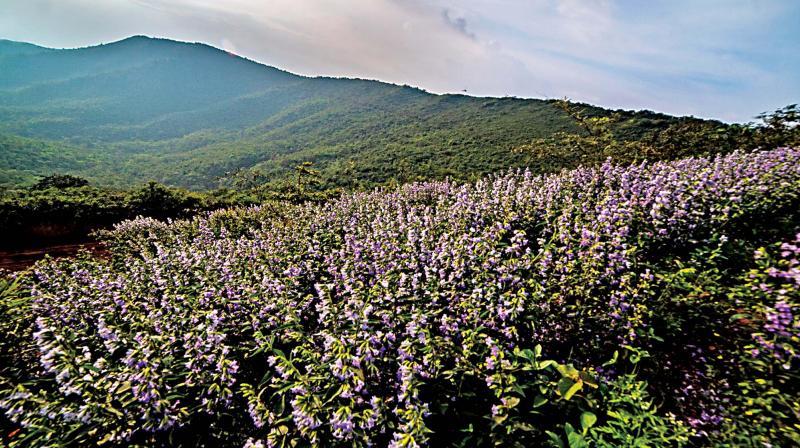Neelakurinji abloom: It's blue flame on Ballari hills

Ballari: The mine-ravaged hills of Ballari may have been destroyed by rampant iron and manganese ore mining, and its ancient shrines laid waste but in an ironic symbol of the fight that nature puts up against the might of mining machines, the Neelakurinji that only blooms once in 12 years has turned the dry expanse of rock across the Kumaraswamy hill in Swami Malai forest in Sandur is a swathe of brilliant purple and blue … the Neelakurinji (Strobilanthes Kunthianus) is in full bloom.
Tourists and nature lovers are now thronging Sandur where the flowers are the cynosure of all eyes for the past week.
Kurinji is a shrub found in the Western Ghats. In fact the Nilgiri Hills, which literally means the blue mountains, get their name from the purplish blue flowers, Neelakurinji.
Besides the Western Ghats, Neelakurinji is also seen in the Shevroys in the Eastern Ghats, some parts of Idukki in Kerala and of course, the Sandur hills of Ballari district.
In fact in 2006, the Neelakurunji had flowered in Kerala and Tamil Nadu after a gap of 12 years. They were also spotted blooming in 2016 in Udhagamandalam near a major road.
Kudligi-based Siddharam Hiremath, a nature photographer, revealed that he first noticed the Kurinji bloom in the hills behind the Kumaraswamy temple in Sandur. The plant is usually 30-60 cm tall but can grow well beyond 180 cm in congenial conditions and blooms in cold weather. The Sandur Hills are at around 2,500 feet above sea level, and the fact that there have been good rains in the past few days, has helped give a boost to the blooming of the flowers.
About 46 varieties of Neelakurinji have been identified in India while all over the world, there are about 240 varieties. Wildlife photographer Shivashankar Banagar said the mass blooming is a celebration for nature lovers. "The flower survives for 15 days. So, one can have a glimpse of them over the next 4-5 days," he added.
Environmentalists in Kerala have been taking up conservation of these flowers and such an effort is needed in the state too, say eco-activists. Tamil poems dating back to more than 2,000 years, praise the Karungal Kurinji and the honey made from bees that feed on its nectar. Hindu mythology records god Kartikeya wearing a garland of flowers at his wedding to tribal girl, Valli.
"This is one reason why we are demanding a complete ban on mining in the Kumaraswamy hills in Sandur, where the 1200-year-old Kumaraswamy and Parvati temple complex is located. The government should take the initiative to preserve this forest area so rich in eco-diversity so that the Neelakurinji keeps blooming," said Shrishaila Aladahalli, a green activist from Sandur.

